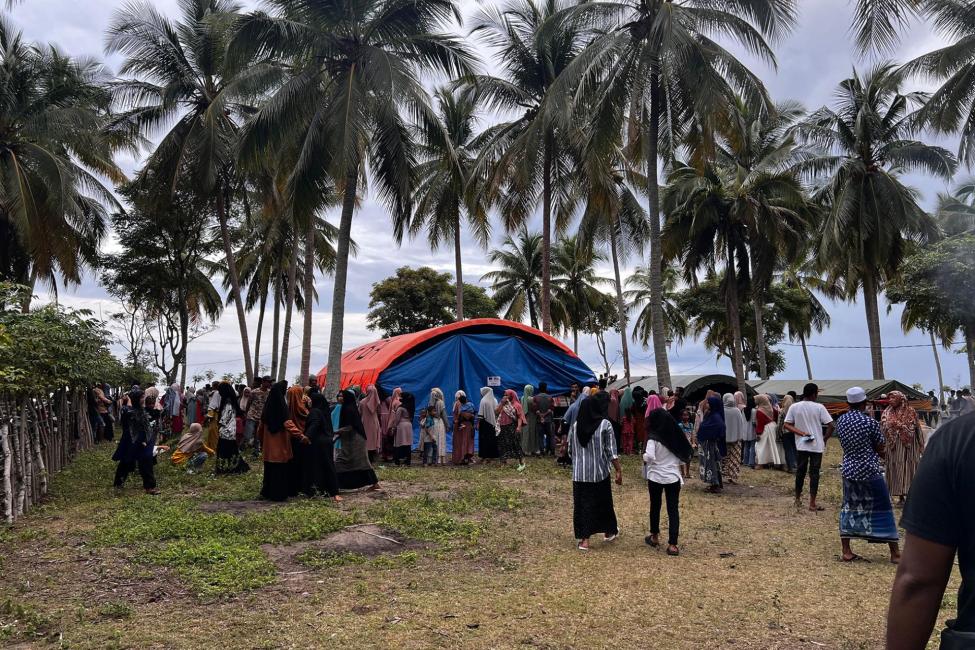-
Who we are
WHO WE AREThe International Organization for Migration (IOM) is part of the United Nations System as the leading inter-governmental organization promoting since 1951 humane and orderly migration for the benefit of all, with 175 member states and a presence in over 100 countries. IOM joined the United Nations system in September 2016.
About
About
IOM Global
IOM Global
-
Our Work
Our WorkAs the leading inter-governmental organization promoting humane and orderly migration, IOM plays a key role to support the achievement of the 2030 Agenda through different areas of intervention that connect both humanitarian assistance and sustainable development.
Cross-cutting (Global)
Cross-cutting (Global)
- Data and Resources
- Take Action
- 2030 Agenda
IOM Launches Institutional Strategy on Migration, Environment and Climate Change for Next Decade
Geneva – Ahead of the 26th UN Climate Change Conference of the Parties (COP26), the International Organization for Migration (IOM) has unveiled its new Institutional Strategy on Migration, Environment and Climate Change 2021-2030. The Strategy outlines how IOM will support States in their efforts to assist and protect those affected by the adverse impacts of climate change, environmental degradation, and disasters due to natural hazards, including migrants and the internally displaced.
"This strategy represents a strong long-term commitment on the part of IOM to address the climate crisis and its effects on migration. This is a priority for IOM, given the urgency of the challenges that populations around the world are facing," said António Vitorino, IOM's Director General.
In 2020 alone, over 30 million people were internally displaced by disasters, the vast majority in developing countries. Meanwhile, the World Bank has estimated that there will be more than 216 million internal climate migrants by 2050, across six regions, with almost 40 per cent within Sub-Saharan Africa.
In view of this, the Strategy sets out three objectives that will guide the Organization`s work on migration, environment, and climate change for the next decade:
- Develop solutions for people to move by managing migration in the context of climate change, environmental degradation, and disasters due to natural hazards.
- Develop solutions for people on the move by assisting and protecting migrants and displaced persons in the context of climate change, environmental degradation, and disasters due to natural hazards.
- Develop solutions for people to stay by building resilience and addressing the adverse climatic and environmental drivers that compel people to move, making migration a choice.
The strategy builds on IOM’s longstanding experience on migration, environment and climate change acquired through both operational and policy work over the past three decades, including:
- The Pacific Response to Disaster Displacement (PRDD) Project, in which IOM with the Internal Displacement Monitoring Centre (IDMC) and the Platform on Disaster Displacement (PDD) are working to generate new evidence to help governments better understand, plan for, prevent and respond to disaster displacement. The project contributes to formulating better policy responses and disaster planning, as well as new and improved operational tools.
- The Implementing Global Policies on Environmental Migration and Disaster Displacement in West Africa Project, in which IOM aims to support States in West Africa in their efforts to minimize displacement and facilitate regular migration pathways in the context of disasters, climate change and environmental degradation. The project supports States in the region to implement their commitments as set out in the Global Compact for Safe, Orderly and Regular Migration and the African Union’s 3-Year Implementation Plan of Action for the Global Compact for Migration in Africa 2020–2022.
With climate change and environmental degradation profoundly shifting contemporary migration patterns, and thanks to its global footprint, including in some of the most remote areas affected by climate change, IOM has had the opportunity to continuously adapt and expand its expertise.
The Organization is committed to placing vulnerable people at the centre of its responses and believes that when well-managed, migration becomes a safe and accessible choice, it can help people adapt to environmental and climate change pressures.
The strategy is available here while other thematic materials can be found here.
For more information, please contact: The Migration, Environment and Climate Change Division, International Organization for Migration, email: meccHQ@iom.int
Kennedy Omondi Okoth, Communications Associate, International Organization for Migration, email: kokoth@iom.int

